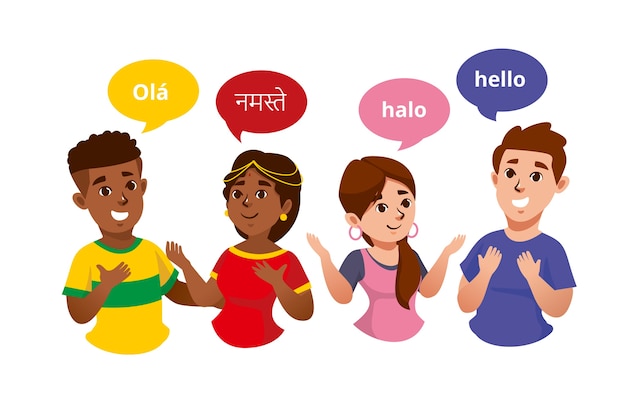My upbringing amidst a confluence of languages, French at home and English at school, inadvertently shaped my linguistic journey. While I effortlessly conversed in English, the rich melodies of my native Goun, spoken by my grandparents, remained a mesmerizing enigma. I could comprehend the language’s essence when spoken to, yet expressing myself in its intricate nuances remained elusive. This unique linguistic experience introduced me to the elegance of bilingualism, and its captivating varieties.
This fascinating encounter sparked my curiosity about the types of bilingualism that exist. Let’s delve into the captivating world of bilingualism, exploring its various facets and the enriching experiences it offers.
Simultaneous bilingualism
Simultaneous bilingualism is when a person acquires two or more languages from birth or a very young age. This is the most common type of bilingualism, as it is estimated that about 50% of the world’s population is bilingual.

Sequential bilingualism
Sequential bilingualism involves acquiring a second language after establishing a foundational understanding of the first language. This process can occur at any age, but it is particularly common during childhood, often through formal education or immersion in a new language environment.
Additive bilingualism
Additive bilingualism refers to the acquisition of a second language while simultaneously maintaining and developing one’s native language. This approach involves continuous use and growth of both languages, fostering cognitive benefits and expanding opportunities. Additive bilingualism is often seen as a positive thing, as it can lead to cognitive benefits and increased opportunities.

Subtractive bilingualism
Subtractive bilingualism is one of the types of bilingualism, where the acquisition of a second language results in the decline or loss of one’s first language. This can happen when individuals are pressured to prioritize the second language in settings like school or work, or when they immerse themselves in a new linguistic environment where the second language dominates. Subtractive bilingualism can have detrimental consequences, leading to the erosion of one’s native language proficiency and cultural identity.
Compound bilingualism
Compound bilingualism arises when individuals seamlessly integrate two or more languages into a unified linguistic system. This phenomenon typically occurs when individuals are exposed to multiple languages from an early age, leading to the development of a single linguistic structure that encompasses both languages. Compound bilingualism often manifests in creative language use, enabling individuals to express themselves in ways that transcend the limitations of a single language.
Coordinate bilingualism
Coordinate bilingualism represents the ability to effortlessly navigate two or more languages with equal proficiency, enabling seamless communication in any situation. This linguistic mastery allows individuals to fully utilize their languages, unlocking the full range of expressiveness and cultural understanding that each language offers.
Receptive bilingualism
Receptive bilingualism is when a person can understand a second language, but they are not able to speak it fluently. This can happen when a person is exposed to a second language but does not have the opportunity to use it actively. Receptive bilingualism can still be beneficial, as it can allow people to follow conversations and access information in a second language.
Subordinate bilingualism
Subordinate bilingualism describes the situation where an individual possesses varying levels of proficiency in two or more languages. This disparity often arises due to differential exposure or usage patterns across the languages. Despite the uneven proficiency, subordinate bilingualism remains prevalent, reflecting the types of bilingualism individuals encounter in their daily lives.

And here ends this informative list that gives us a taste of bilingualism at its finest. From the effortless fluency of simultaneous bilinguals to the receptive understanding of languages that once flowed like native melodies, we witness the remarkable adaptability of the human mind, its ability to embrace and integrate multiple languages, each unlocking a new dimension to communication and cultural understanding. In which of the categories above do you find yourself? Share your experiences and insights in the comments below, and let’s continue to celebrate the linguistic diversity that makes our world so vibrant and enriching.




